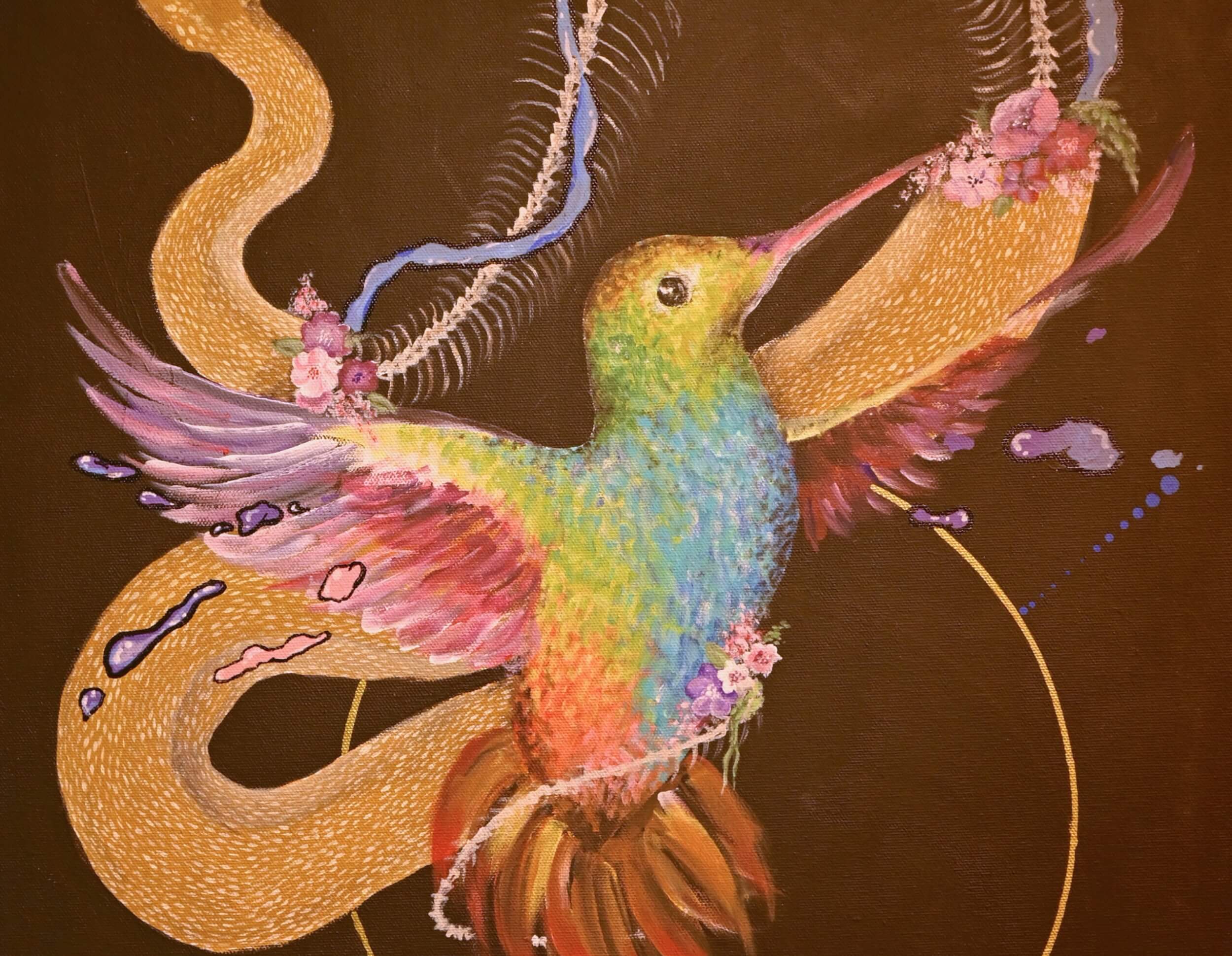According to the artist statement that Spencer Mills hung next to his detailed black-and-white drawings in the second of three Senior Portfolio Shows in the Ponzio Arts Center’s main gallery, the act of creation brightens the day and affords perspective.
“Doing this portfolio has allowed me to recapture the joy of creating itself,… attempting to find the beauty that I’m always surrounded by. Creating has been like a piece of driftwood, keeping me afloat,… bringing me joy and optimism that I often struggle to find.”
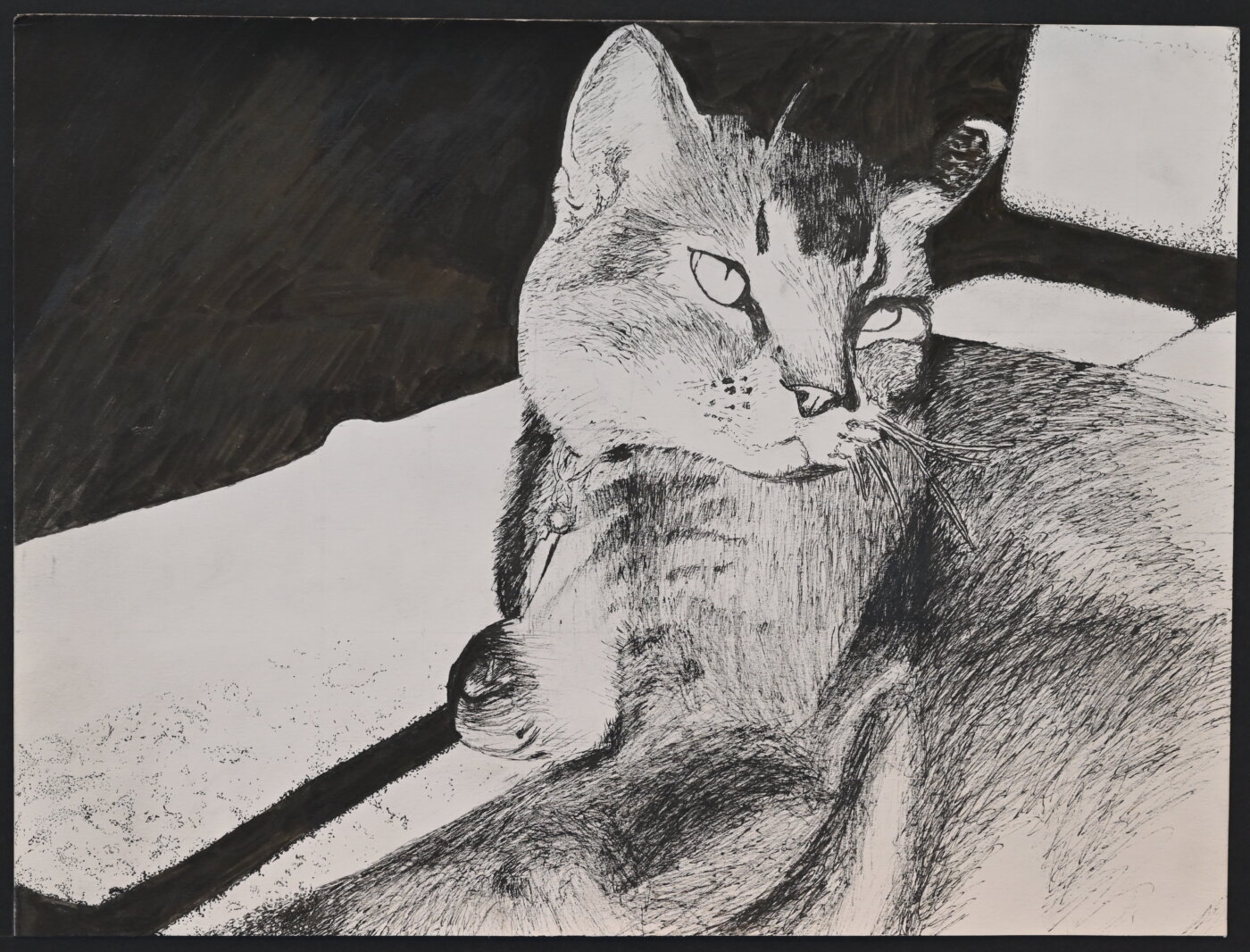
For a visitor to any one of this season’s three exhibitions of Senior art, which have been a Colorado Academy tradition for more than 30 years, joy, beauty, and optimism are impossible to miss among the works on paper, sculptures, photographs, and installations that bloom in Ponzio this spring. The shows are the culmination of months of labor for these Seniors and represent the students’ personal statement of who they are as creators—bravely on display for the entire community to see.
Their artist statements reveal ideas about creativity that are as different as the artists themselves, and they hint at the long journey many have taken to get here. As Mills writes, “Throughout this process of creating my portfolio, I often asked myself, ‘What am I doing?’ If you turn through the chaotic, nonsensical pages of my sketchbook, you will find these exact words written all over my pages.”
But what all of these artists have been doing as they’ve worked their way through CA’s visual arts program is, in fact, crystal clear: discovering the world, and themselves, through their art.
Making sense of the world
“Throughout the pandemic and the three years since,” says Charlotte Sovka, “I felt not just physically isolated from the rest of the world, but also emotionally. My family stopped eating dinner together, I didn’t see my friends in person for months, and it seemed like I couldn’t have a conversation with someone without one of us checking our phones. I became interested in the notion that we can exist in the same spaces and yet feel completely separate from each other.”
Reflecting on the experience that dominated her own high school years as well as those of most of her peers, Sovka came to focus her art around the theme of connection, inspired by the way Renaissance, Baroque, and Realist artists captured human emotions in the most mundane moments. Sovka’s charcoal sketches depict the fragmentation of relationships and the longing for a more connected past. Influenced, as well, by T.S. Eliot’s Four Quartets, her works express the desire for experiences that are just out of reach.
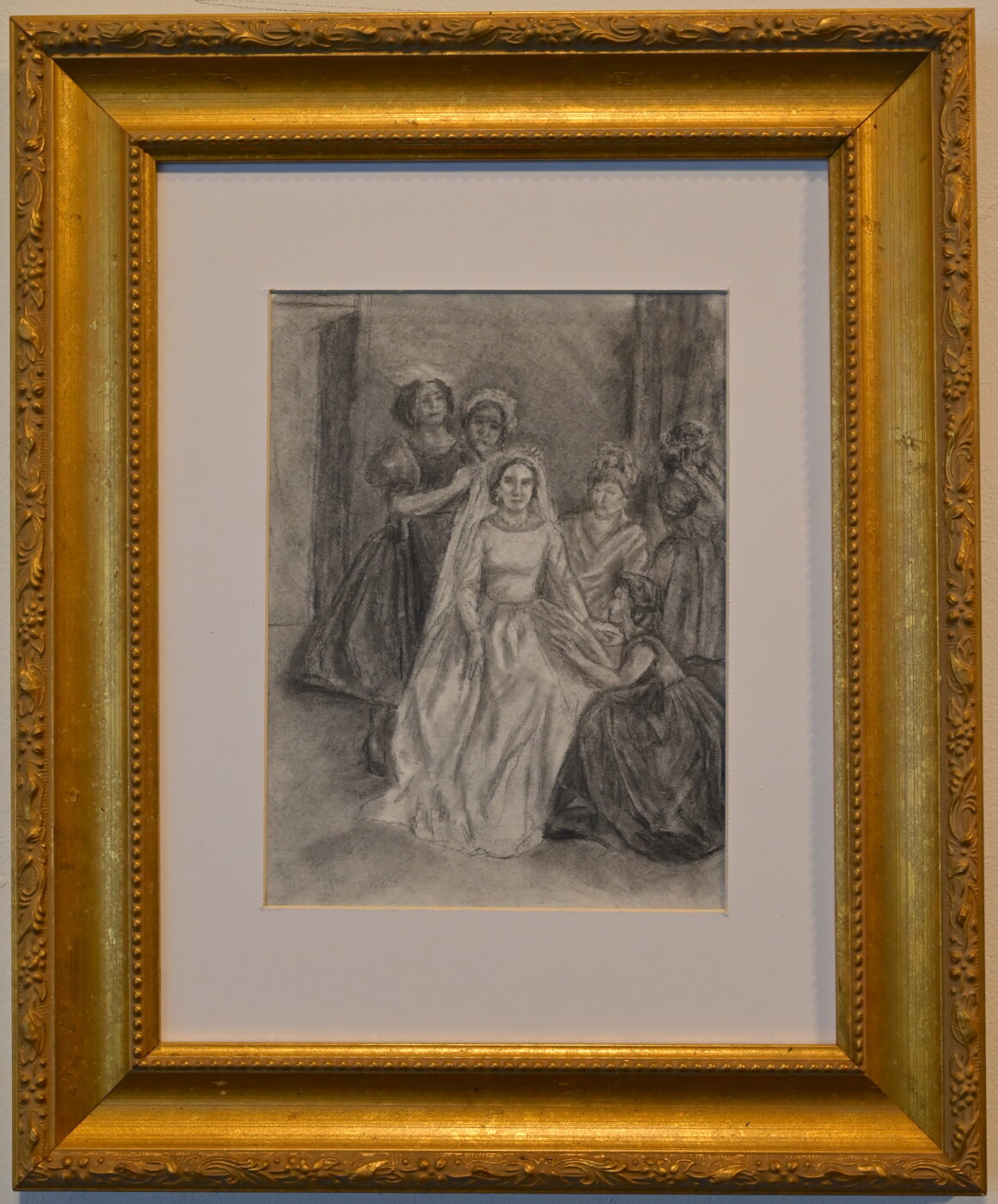
But in her final piece, “Trpělivost růže přináší” (a Czech proverb that translates as “Patience brings roses”), Sovka looks forward. “I hope that after the turbulence of the past few years, we begin to reconnect with each other. Given enough time, I hope that we are able to get back to something more meaningful, something more pure. The human experience will never be the same, but it’s still possible to find a way to engage with the people around you through fleeting moments and small connections.”
For Ashley Hagen, too, moments of great significance are found in the mundane. Her photographic interpretations of abandoned buildings and cars—those things that modern society has forgotten—highlight “the meaning and true beauty behind what we normally classify as ugly or unusable.” After printing and laser-cutting photographed houses to assemble into a large, lighted installation, Hagen realized the power that the buildings held.

“Over time, I saw how I could bring not only physical life into these photos, but also light. As light bulbs illuminate each and every building, I hope that viewers of my piece will walk away with a greater sense of appreciation for the simple things in life. This is not to say that we should not continue to move our society forward, but to recognize when is the right time to take a step back and find beauty.”
In observing the world around her, Liana Fagelson discovered new meaning in street art, graffiti, and, most of all, music. “Many people, including myself, find music to be an escape from reality, and this is what I work to convey with my art. Over time, I have realized that art doesn’t have to just look good on the canvas, it also has to have meaning, whether it is to the artist, the viewer, or both.”
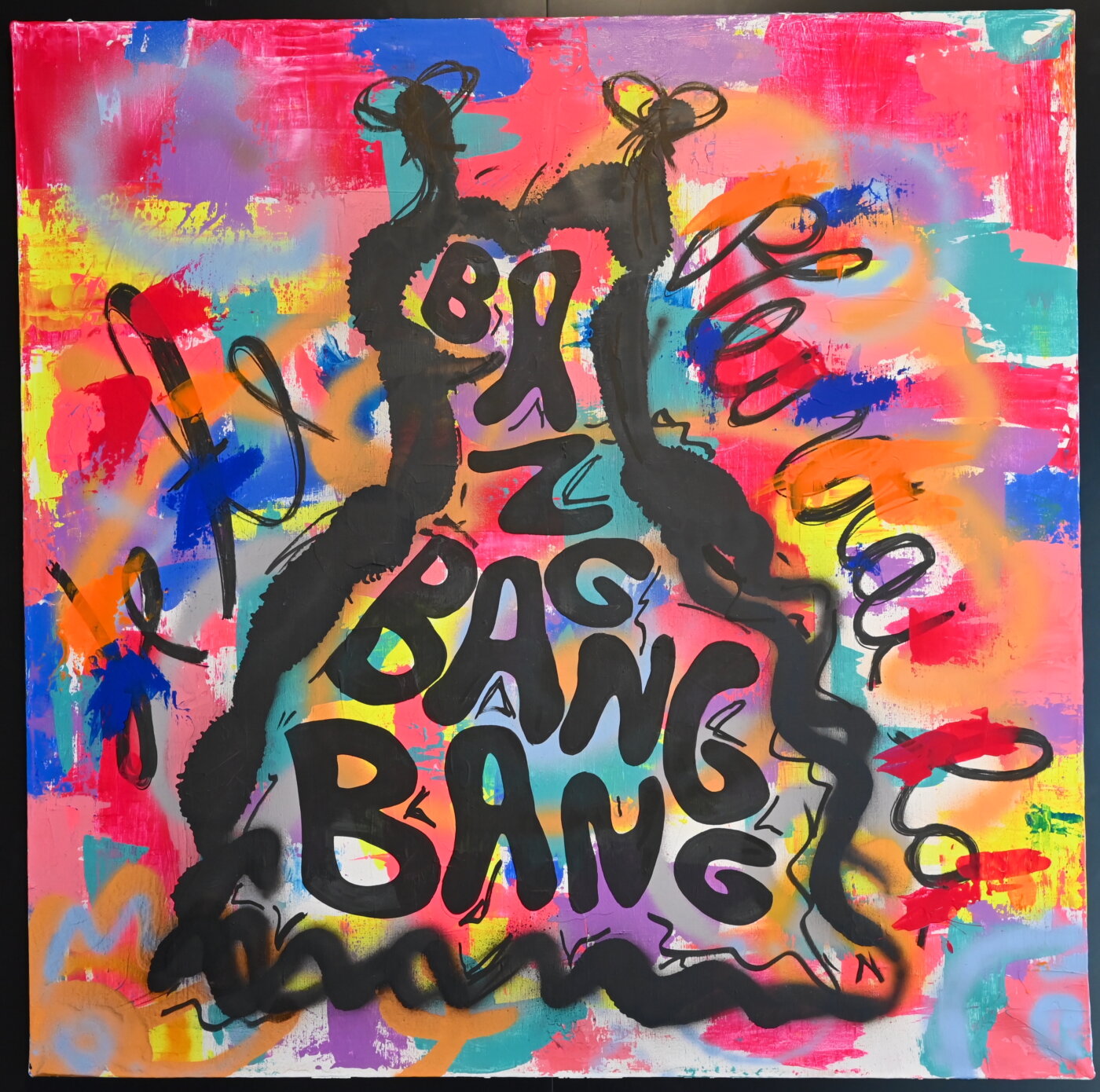
Fagelson’s brightly colored canvases mix spray paint, acrylics, and paint pens to capture the vibrant messages in her favorite music. “Throughout my art-making practice, I have realized how much music influences my work. All of my art is inspired by the songs that stay in my head for days. Oftentimes when I hear a song, I am able to think of an art piece or even just a mix of colors that correlates with it in my head. The songs hold important messages, especially in relation to our modern world.”
Sofie Henry’s bright colors hold a different significance, summoning an exaggerated cast of characters that represent creativity and raw expressiveness. “If you had the choice, would you dress up in the style you really prefer,” Henry asks, “wear your eyeshadow to your temples, and draw your lipliner down to your chin? Would you let yourself be unfiltered? Would you truly let yourself be you?”
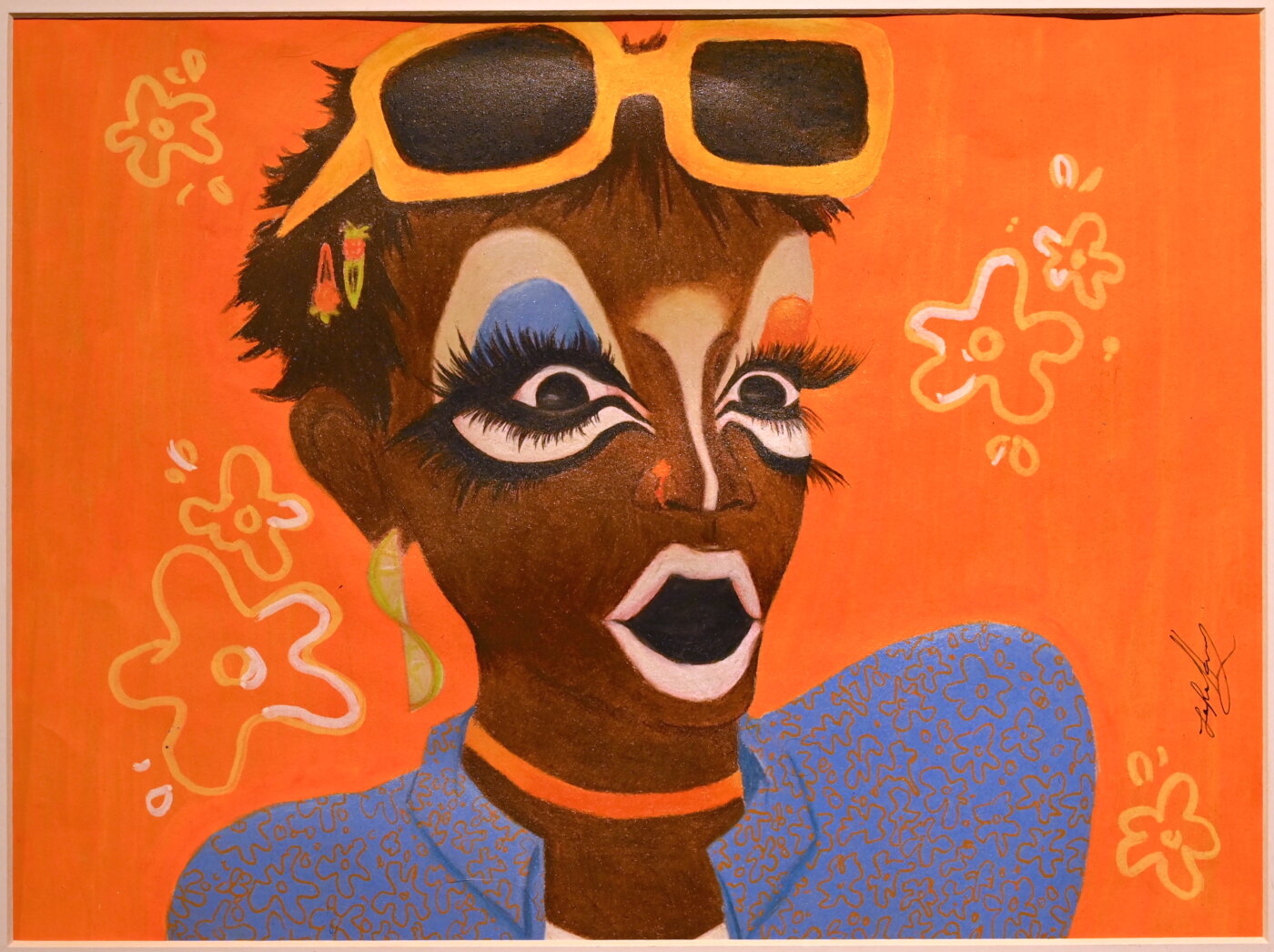
Influenced by avant-garde makeup, alternative subcultures, and club fashion, Henry’s caricature-like portraits embrace the “weird, wacky, and gripping” communities of creators who question the world of appearances. “These figures express so many different identities and perspectives that I find so incredibly inspiring. I hope that viewers find some weird and wonderful inspiration of their own.”
Making sense of art
Diana Reidy describes her portfolio of work as a conversation between art’s past and the present day. “My discovery and education in art history began to intertwine with my own artwork last year, as I studied the complexities and beauty of the Renaissance. I was fascinated by the duality of perfection and perspective artists like Michelangelo and Leonardo Da Vinci used to address societal constructs.”
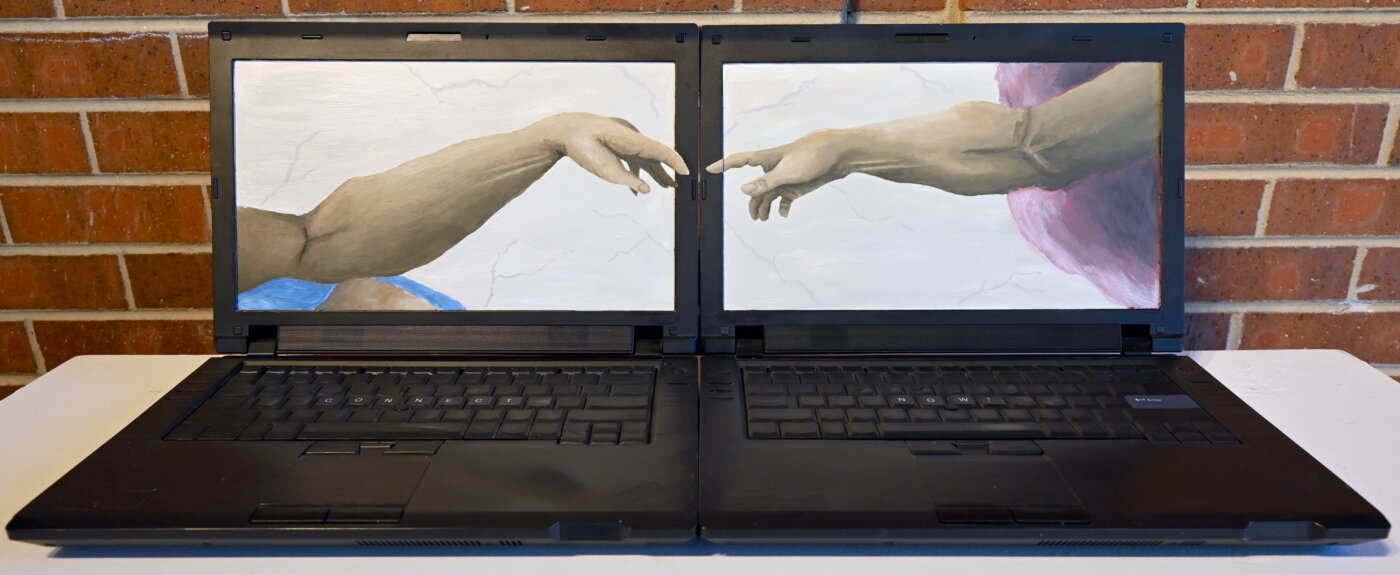
Through sometimes witty, sometimes thought-provoking juxtapositions, Reidy brings the past into the present. “My goal as an artist is to apply famous pieces of the past to our current culture, transforming what it means for art to be appealing to my generation of today. Using my growing knowledge of art history and my passion for my art to appeal to others, I intend to express my generation’s culture through my own aesthetic lens.”
For Campbell O’Neal, the work of assembling her own portfolio revealed the primacy of the artistic process. Through her block prints, O’Neal highlights the behind-the-scenes labor that goes into every piece. “Actually rolling the ink onto a block and printing is the easy part. I’m proudest of my ability to take the vision in my head then flip it into a negative image and carve it out of a piece of linoleum.”
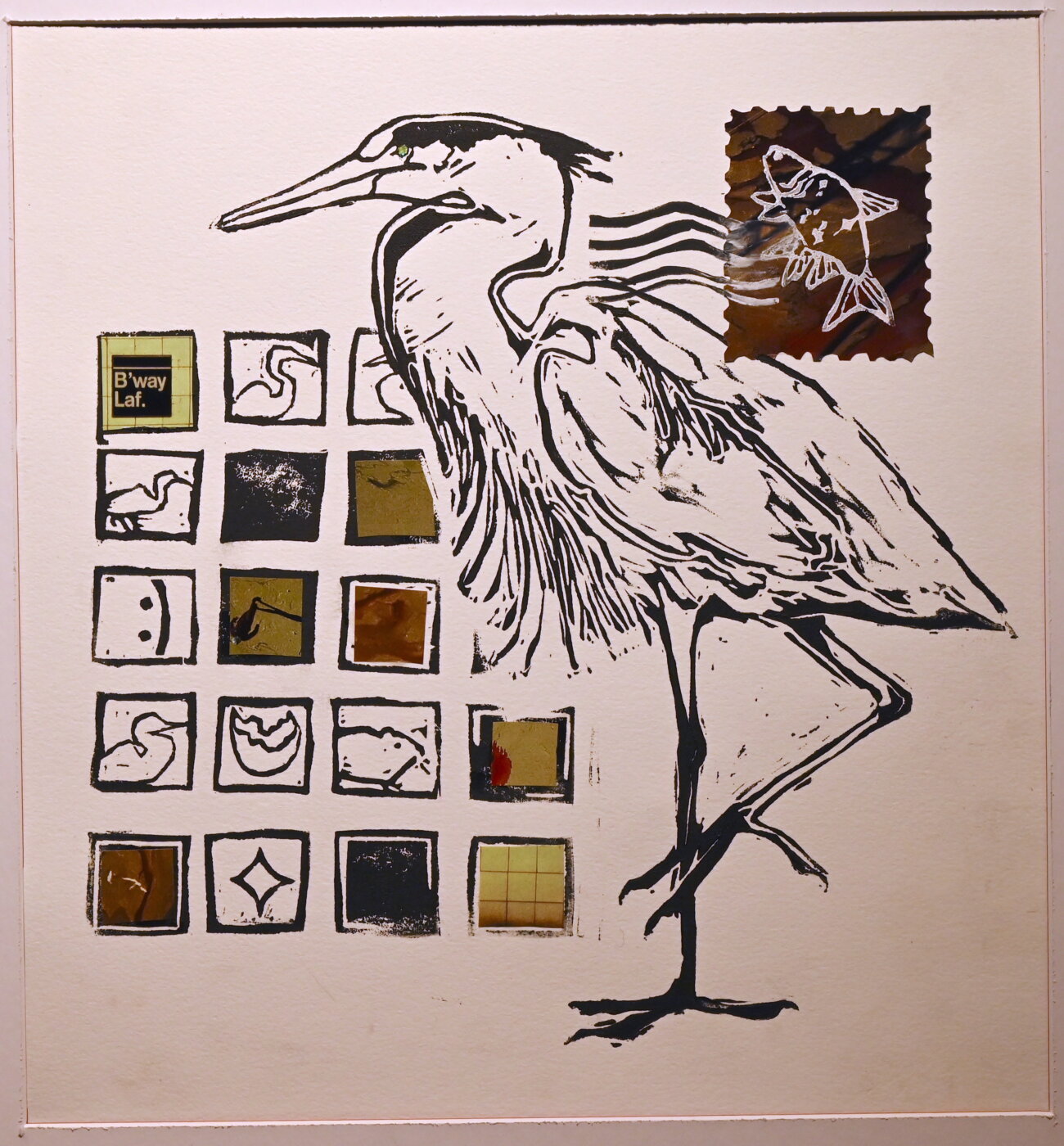
Her choice of subject, the great blue heron, symbolizes both the difficulty and the beauty of printmaking. “To me, great blue herons are the perfect subject matter because they are all sides of the circle of life. They are beautiful hunters, graceful killers, and solitary beasts. Printmaking requires test prints, experimenting with new kinds of paper or ink, and alternative methods to carving; it is detailed and time-consuming, but it is also freeing. When the print is carved, it’s carved. To me, the actual printing onto paper is an added flourish; it’s the blocks that really show off the work. It offers me a sense of freedom, like a heron gliding above the still waters of a wide river.”
The artistic process comes to the foreground in the work of Anna Colpack, as well. Self-conscious and sometimes feeling paralyzed in art classes as she questioned her abilities and compared her work to that of her peers, Colpack turned to her notebook as a safe space for recording her emotions and struggles as potential ideas for future artworks. There, she could “make whatever I wanted, because no one would see it; it was just a ‘draft.’”
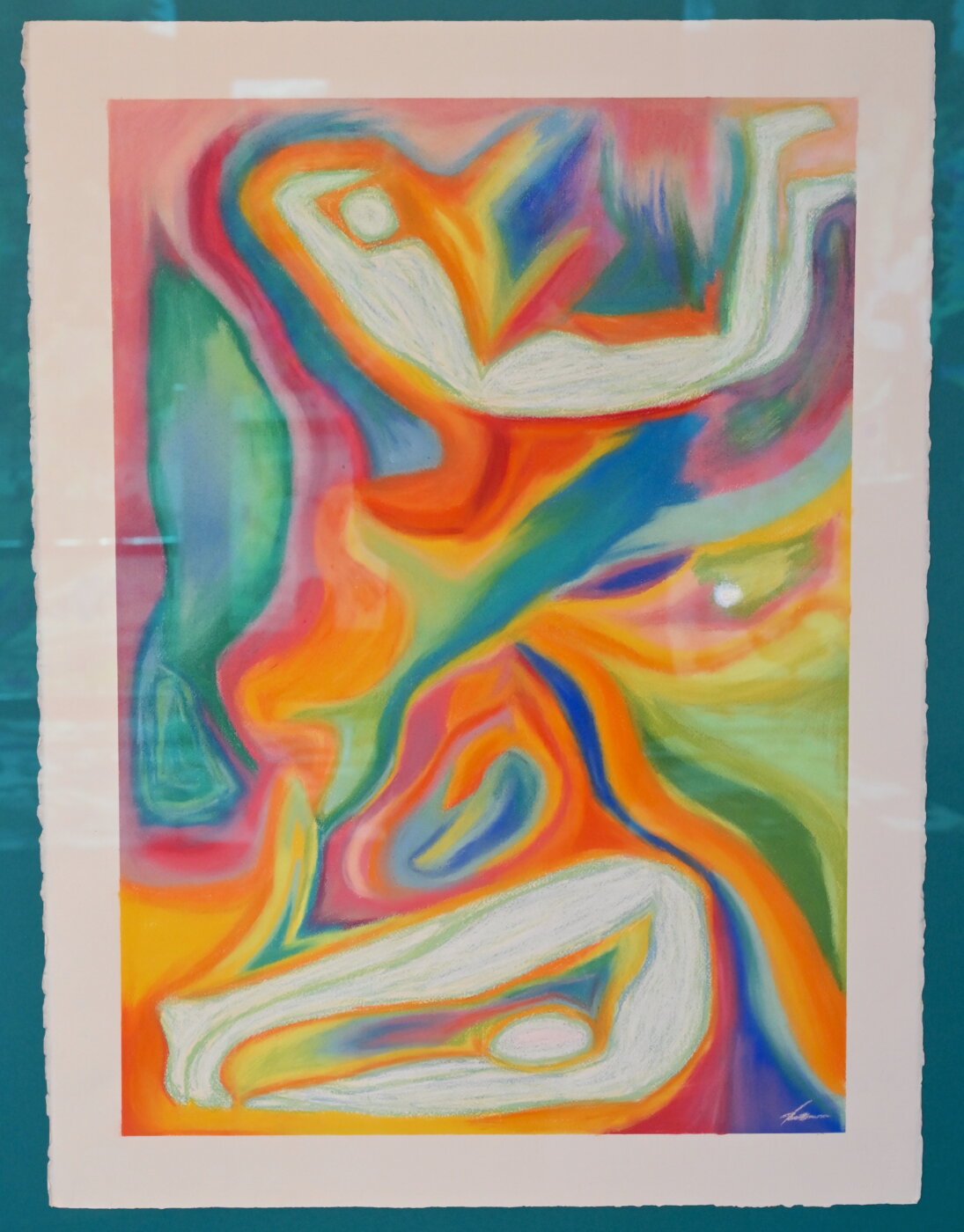
Soon, she was turning these thoughts into sketches and practice pieces, free from the fear of not being “good enough.” These efforts, never intended to be shown, eventually became the focus of Colpack’s portfolio. “I rediscovered my love of art making when I realized that it’s not about the final piece, what others think about it, or even how good it is. The true beauty is in the process it takes to make something.”
According to Piper Adams and Dana Elprince, experimenting with the artistic process, techniques, and styles was core to their time in the studio. Adams’ large-format interpretations of flowers push the boundaries of how people view nature and colors. Printed on large sheets of transparent plastic and affixed to the windows of the main Ponzio gallery space, the magnified and altered flower photos feature over-saturated and inverted colors that make for a startling and unnatural looking landscape. “I want to give the audience a feeling of nature that is different from their everyday experiences.”

For Elprince, an array of materials and expressive approaches yields a distorted view of the self. “I wanted to explore themes of chaos, and I used color to bring this to life. But the pieces in black and white represent a more innocent, juvenile mind. Some of my drawings have a comforting and inviting look; in some of the more distorted pieces, I tried to capture fearful, lost, and vulnerable expressions. Collectively my works represent the journey of leaving my comfort zone.”
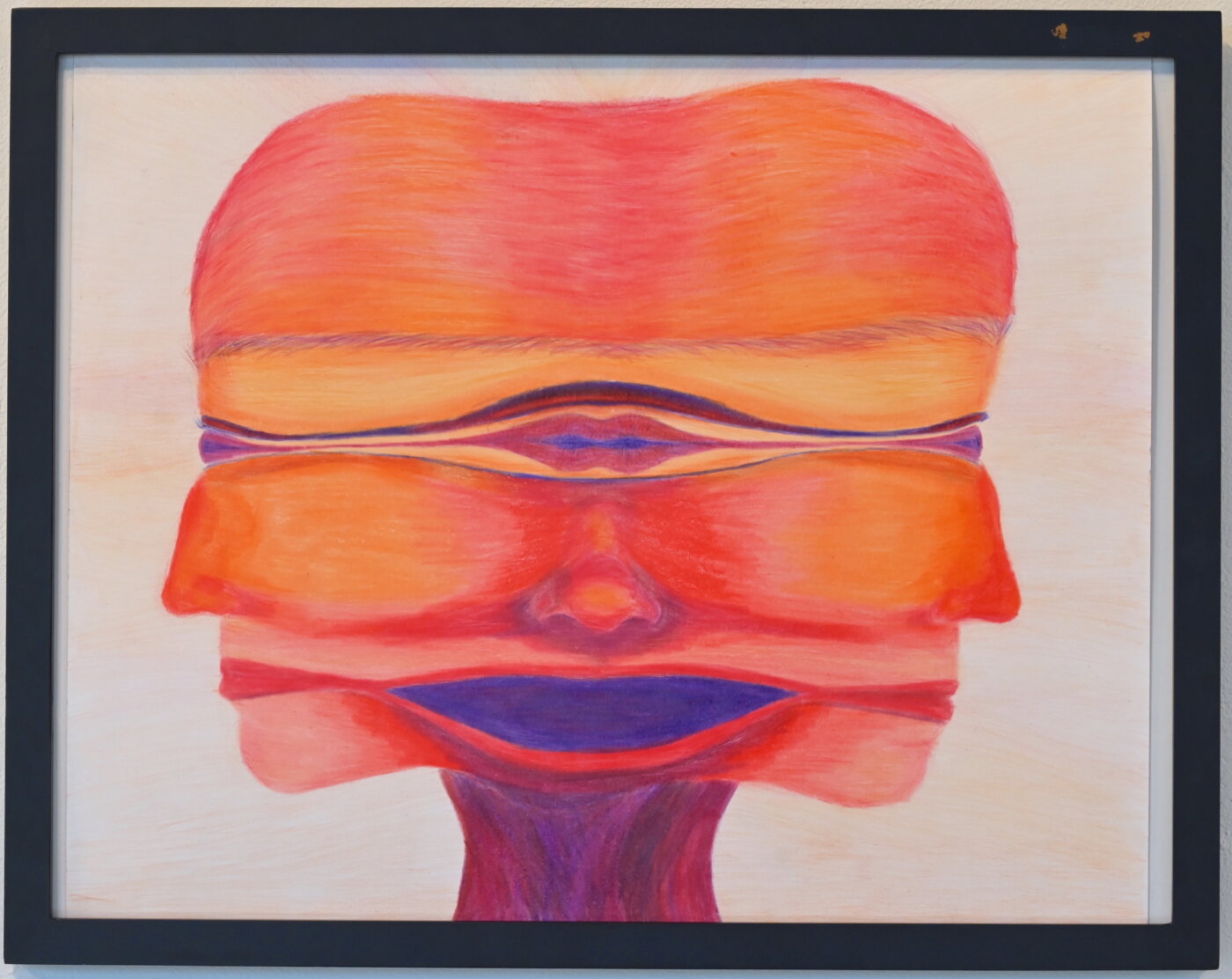
Making sense of self
Noah Sohn views his Senior Portfolio as an act of personal rediscovery. “Art has long been a part of my life,” he says, “and I was recently reminded of this when I came across some long-forgotten sketch books filled with doodles belonging obviously to my younger self. The dawning realization that I am about to start my life away from home has stirred me to remember and reflect on the moments of my childhood.”

Sohn’s portrait of himself posing as a child with his siblings encapsulates the value of revitalizing forgotten moments. “There was a time when I was certain that my art needed explicit purpose—a greater message. However, with this conviction art became much less enjoyable.” Today, he says, he relishes painting for the sake of painting, the enjoyment derived from the act of art-making itself. In this way, he’s been able to “rediscover the child hidden in those dusty sketchbooks.”
According to Ella Walsh, human flaws and errors will never detract from the beauty of our existence. Her body of work, deliberately rough and incomplete, evokes cautionary Greek myths while celebrating imperfection.

The story of Narcissus, for example, warns against self-regard, but at the same time it acknowledges the power of human beauty. Icarus, whose wax wings melted when he flew too close to the sun, symbolizes the wonder of freedom. And in the tale of the three Fates, we encounter human-like sisters who nonetheless offer a sense of agency over our own lives. “While these myths warn against the consequences of our flaws,” Walsh says, “I believe that they also celebrate their origins.”
Xianhao Ou turned to his own family’s story to find a source of beauty and inspiration for his art. “I remember drinking tea at my grandparents’ house surrounded by luscious green bamboo, with the only ambiance coming from nature itself. I wanted to show that tea isn’t just a drink but a form of art.”
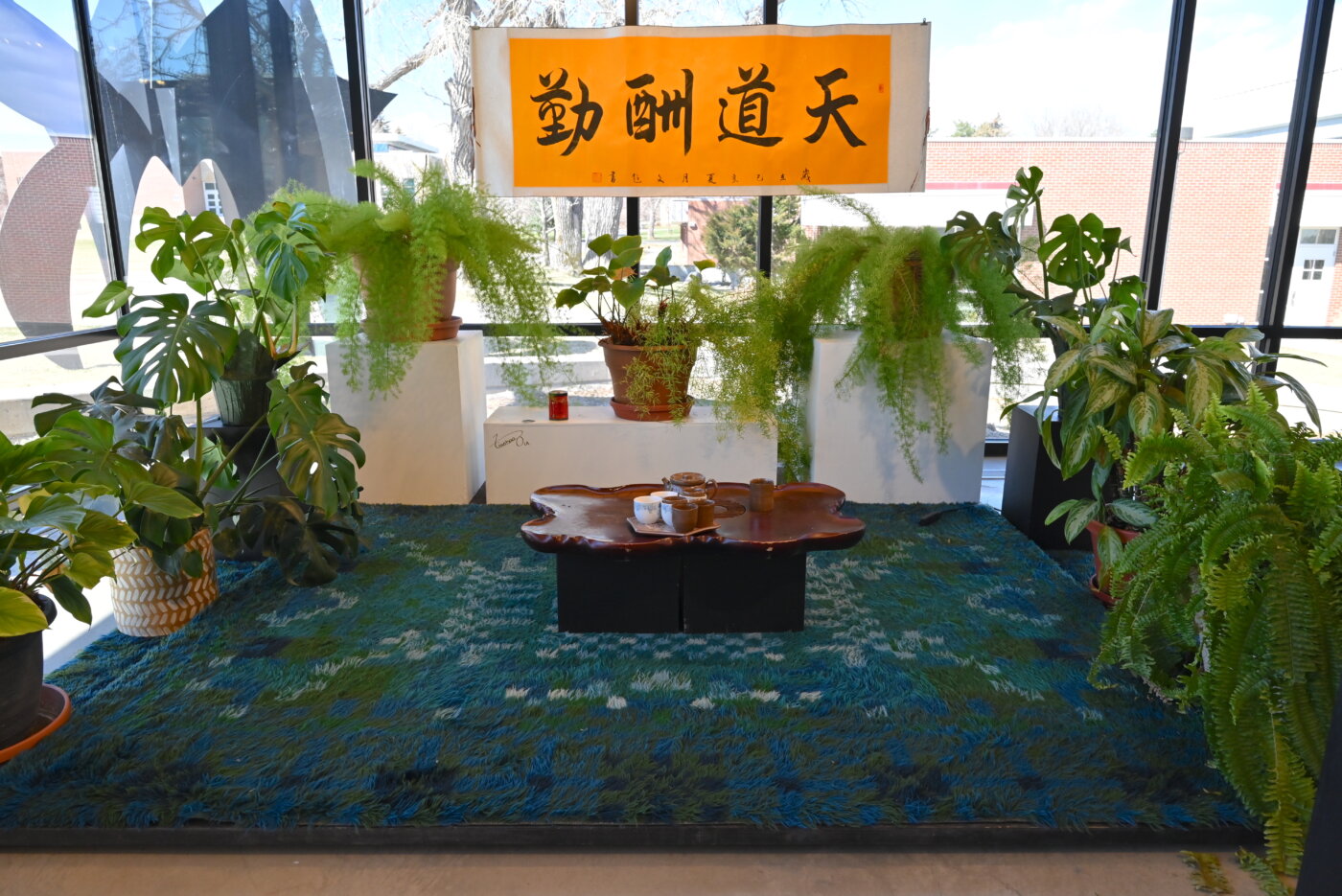
In Ponzio’s main gallery, Ou artfully arranged plants and tea-drinking essentials in a welcoming area; a rug and a banner proclaiming the value of hard work in Chinese invite visitors to enter the experience. The classic teapot and cups on display Ou made himself on the pottery wheel, and guests can choose from Oolong or red tea to enjoy. “I wanted to capture the beauty and significance of tea drinking,” he says.
Fatima Garcia’s portfolio of work perfectly illuminates the struggles and the achievements that define the efforts of all this season’s Senior artists. Entering the year with a desire to explore who she was and to come to a realization that would make her feel complete, Garcia soon realized these were things that were almost impossible to reach. “I spent most of the year hating what I was making, and as I looked back at my art, I thought, this doesn’t represent who I am at all. What was I thinking when I made this?”
Yet through her time in the Senior Portfolio studio, she learned that each work of art is an indicator of a moment in time—a reflection that may not be all-encompassing, but is nonetheless significant. And, she came to understand that a collection of works can add up to a timeline or repository of all the experiences that shape one’s identity.
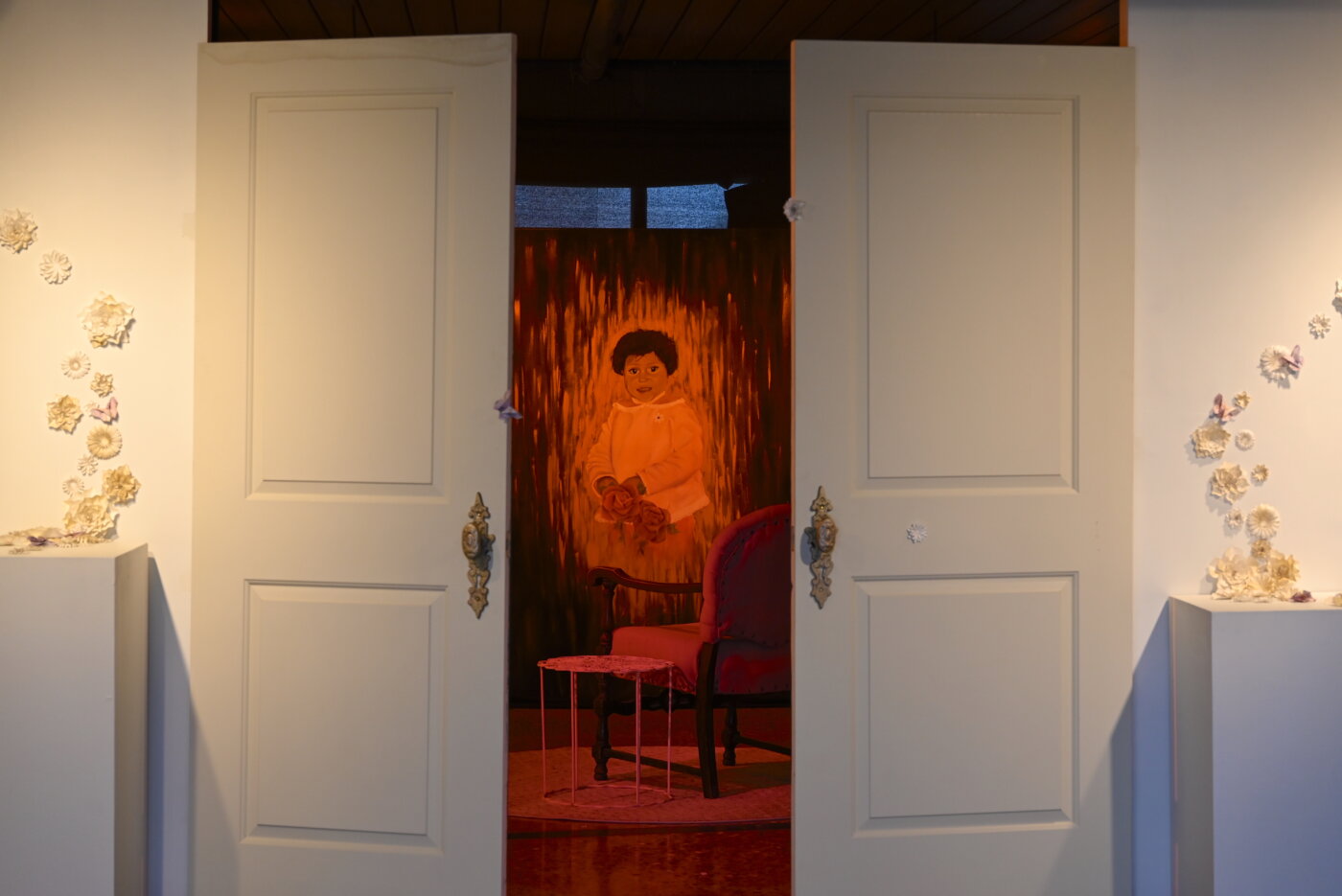
“Our identity starts when we are kids; it is a blank canvas of sorts. The things that begin to fill up that canvas are your experiences. Like getting an origami peso butterfly the last time I saw someone I cared about, or the struggle with my Mexican American identity that felt like two snakes pulling different ways. Sometimes life feels stagnant, like I haven’t advanced or made any progress, or sometimes it feels like an endless string of chaos that doesn’t let me move. In those moments it’s hard to remember how far you have come from that little kid you once were—how proud you should be. The only way to see how far you have come is by looking back at who you once were. Take a seat and reflect.”
